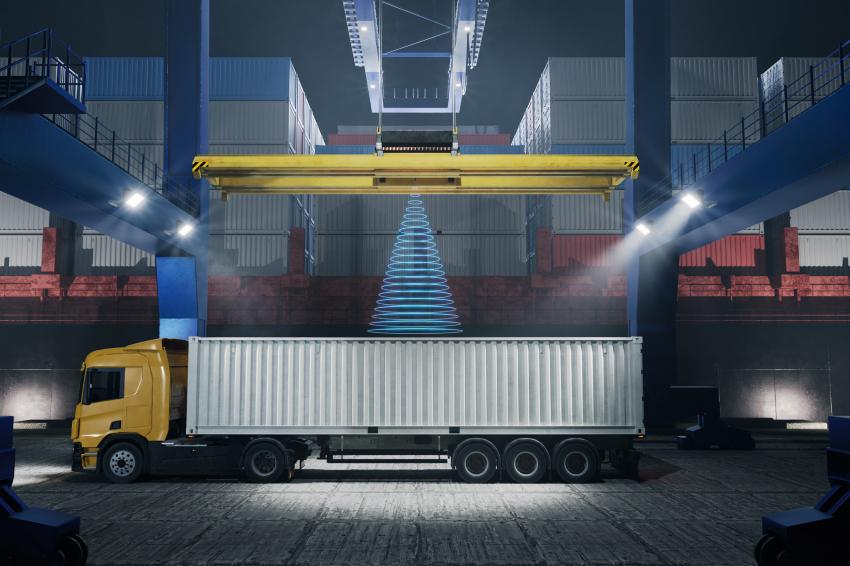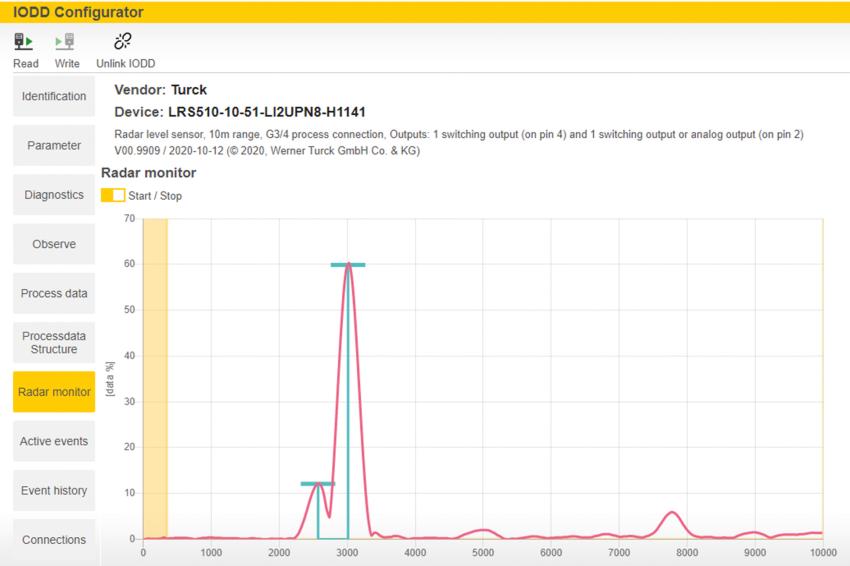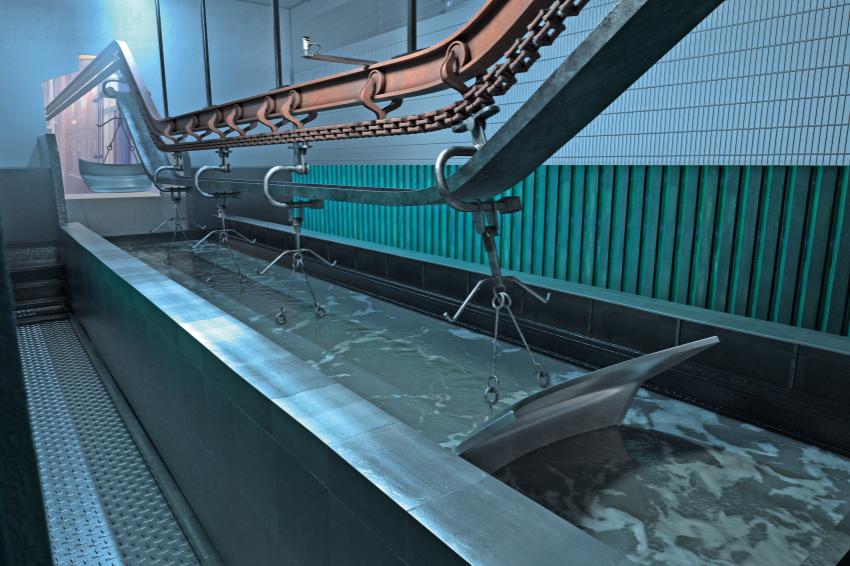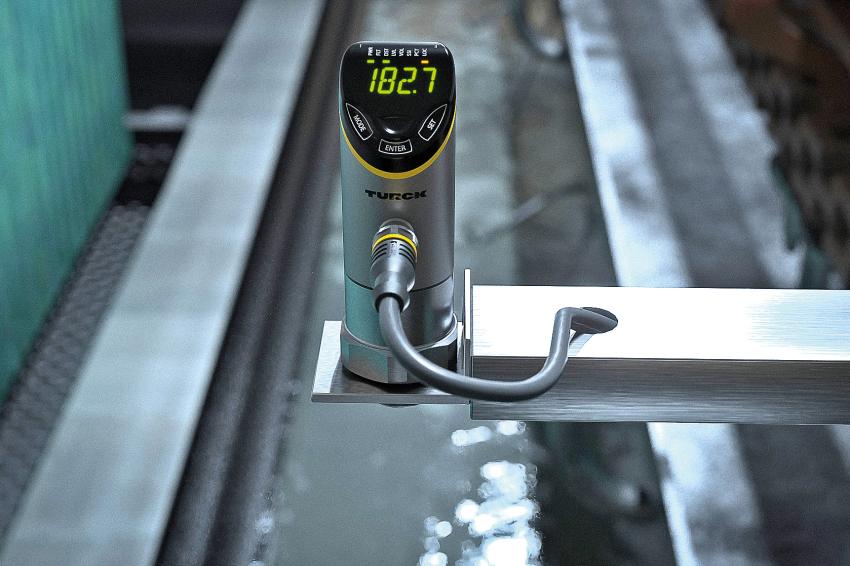From Exotic to Standard
Radar sensors for level and distance measurement in factory and logistics automation
In industrial automation, radars were long considered exotic. The process industry, on the other hand, has long used radar technology for level measurement. Since radars reliably detect levels even over long distances without media contact, they offer significant advantages in many applications over ultrasonic, optosensor or media-contacting technologies. In factory automation, radars were long reserved for safety sensors to detect protective fields, for example on AGVs.
With the LRS+ level radar from the Fluid+ family, Turck launched its first in-house radar sensor on the market last year. The IO-Link-capable radar sensors were developed for level measurement in the range from 0.35 to 10 meters. The devices with IP67/69K protection are therefore suitable for longer ranges and offer more detailed options for suppressing interference signals than the LUS+ ultrasonic level sensor, which is also based on the Fluid+ sensor platform.
Additional data facilitates condition monitoring
A characteristic feature of the Fluid+ platform is the operating unit with capacitive touchpads and translucent front cap, via which the LRS+ displays distance, level and volume values. The absence of a metallic guide rod favors use in hygienic areas and simplifies commissioning. LRS sensors are available either with two switching outputs or with one switching and one analog output. Thanks to their additional IO-Link interface and intelligent, decentralized signal preprocessing, all variants also provide numerous additional pieces of information for processing in condition monitoring applications in the IIoT: in addition to signal strength, these include temperature values, operating hours or switching cycles.
Visualized signal curve
The Turck radar monitor is a browser-based configuration tool that, among other things, displays the signal curve of the radar and provides plain text access to all relevant parameters. Such detailed analysis functions were previously reserved for the high-end radar sensors used in the process industry. With the radar monitor and in particular the visualized signal curve, Turck also makes it easier for its customers to set up in factory automation. For example, the interference signal from an agitator or grid can be masked out or the sensor can be aligned using real-time feedback to maximize the reliability of level detection in demanding applications.
Applications
Level measurement in dip coating bath
One application where the advantages of radar-based level measurement come into play is the measurement of the level in dip-painting baths. In these baths, car body parts are coated by means of cathodic dip painting (CDP) - also known as cataphoresis. In this process, an electric field helps even complexly structured workpieces to achieve an even, durable surface coating.
In order to completely and safely immerse the workpiece attached to a conveyor belt in the coating medium, users need several pieces of information. On the one hand, it must be ensured that the conveyor belt is mounted at the correct height. At the same time, the correct filling level of the coating medium in the basin must be ensured. Another challenge is posed by the high currents used in the coating process.
Since immersion sensors can only be used to a limited extent in the cataphoresis process due to the strong currents, users usually measure the fill levels without contact. However, the conveyor linkage and other structures between the level sensor and the immersion bath can lead to unwanted signals and incorrect measurements of the immersion bath level.
This is where the Turck radar monitor helps the user to suppress interfering pulses from metal carriers or the car body itself. The graph of the signal curve (see graphic on page 31 above) clearly shows a large peak emitted by the main target, the dip tank, as well as smaller peaks caused, for example, by the transport hooks on which the car body parts are pulled through the dip tank. These interfering pulses can be masked out by defining the measurement window individually.
Access to the Turck radar monitor is provided via Turck's IO-Link master. Without additional software, the radar monitor can thus be called up via the IODD configurator (IODD - IO Device Description). The IODD of the radar sensors are downloaded independently by the Turck IO-Link masters.
Another feature of the LRS+ radar level sensors is the alphanumeric bicolor display, which the sensor shares with the other Fluid+ family members. For improved visibility of critical levels, a color change of the display from green to red can be parameterized. This makes it possible for every employee directly in the field to recognize when critical levels are reached, even from a greater distance.
Distance measurements outdoors
After the development of the level radar sensor, it was obvious to adapt the technology for applications where a display and an operating menu on the sensor are not necessary - namely for distance measurements. Turck has therefore presented the first distance radar sensor of the DR-M30-IOL series. With ranges of 0.35 to 15 meters, a stainless steel housing and a shock resistance of up to 100 g, this is also designed for use in extreme ambient conditions. The radio frequency of the FMCW radar of 122 Ghz as well as the IO-Link interface and protection class IP67/IP69K are common features of the sensor with its technology counterpart for level measurement, the LRS.
These features allow the sensor to be used in harsh applications in factory automation as well as in mobile or outdoor applications. This makes the sensors suitable, for example, for distance measurement in port logistics, where optical or ultrasonic sensors are often ruled out due to their limited range or interference from dust, wind or light.
As with the level radar, the Turck radar monitor also simplifies the setup of the devices for the distance radar through the real-time display of the signal curve - especially when setting filters to suppress interfering signals or in tricky mounting situations. Alternatively, the IO-Link devices can also be configured via IODD interpreters such as Pactware. When mounted in close proximity to each other, the FMCW measurement principle of the devices prevents the signals from influencing each other. In addition to IO-Link, all DR-M30-IOL sensors have an analog and switching output, whereby the analog output can also be configured as a second switching output.
This can be helpful in industries such as port logistics, for example. There, the sensors lend themselves to distance measurement on container gantry cranes. The grippers used to transfer ISO containers from ships to trucks or rail cars are picked up by so-called spreaders. The distance between the spreader and the container must be continuously measured to prevent collisions and to control the speed. Thanks to its stainless steel housing, the DR-M30-IOL can also withstand harsh, salty coastal air. In addition, the sensor features 100 g shock resistance.
The spreaders target the container at close range with so-called flippers. These mechanical feeding aids ensure that the container can be docked precisely in the last few centimeters so that the spreader can reliably engage the transport lugs. However, the unfolded slippers widen the dimensions of the container. The system's control system must offset this information with the distance signal from the distance sensors to prevent collisions even in narrow container bays. The distance sensor is also predestined for measuring the distance between the individual container bridges.
Alternative lens configurations for longer distances
In addition to the DR-M30 with standard lens now presented, Turck will soon add variants with alternative lens configurations: A sensor version with a long and narrow detection field is ideal for longer distances of up to 20 meters, such as those found in port facilities. Another lens configuration enables a wide field with a short range, such as is used for object detection in collision protection.
Author
Raphael Penning, Product Manager Radar and Ultrasonic Sensors
Contact
Hans Turck GmbH & Co. KG
Witzlebenstr. 7
45472 Mülheim an der Ruhr
Germany
+49 208 4952-0
+49 208 4952-264










